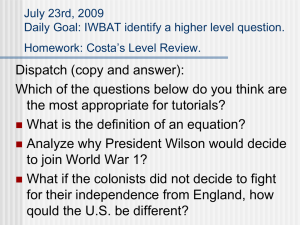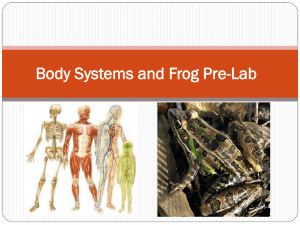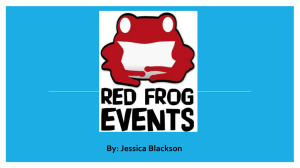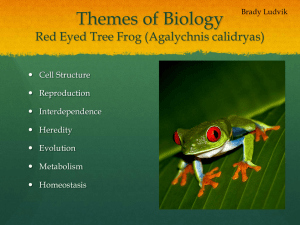Maximizing Turnout Performance
advertisement
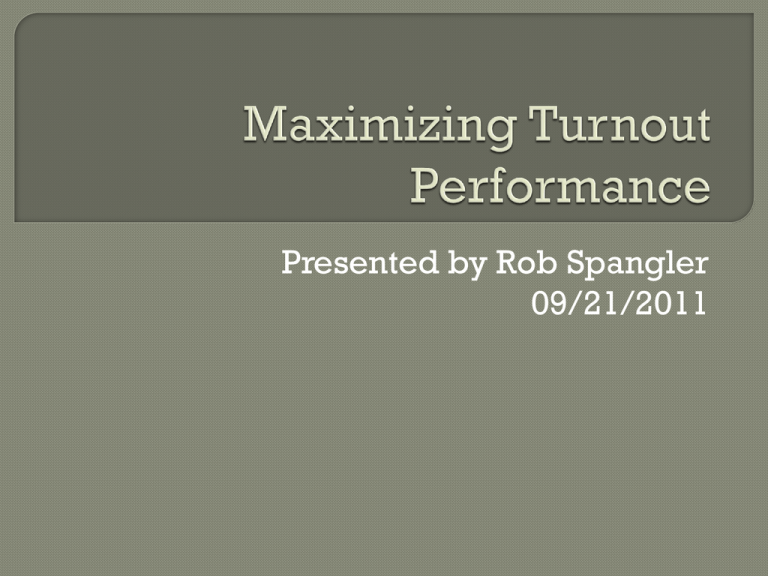
Presented by Rob Spangler 09/21/2011 Mechanical Electrical Brands I have used: Atlas Shinohara/Walthers Micro Engineering Central Valley (kits) BK Enterprises and Railway Engineering types that are ready to lay on userinstalled ties Turnouts are not “plug and play.” Except for handlaid and Central Valley kits, no commercial products completely comply with NMRA standards. Manufacturing variances and lack of NMRA conformance necessitate user intervention to ensure optimum performance. Tools NMRA standards gauge Flat mill file Small jeweler’s files Needle nose pliers Dremel tool with cut-off disks Soldering iron, flux and solder Pin vise and small drills Use an NMRA standards gauge to check the entire turnout. Know how to properly use the gauge (instructions can be found at the NMRA web site at http://www.nmra.org). Atlas: Wide at points (especially code 100 turnouts), wide flangeways. Shinohara/Walthers: Incorrect check gauge through frog, wide flangeways, Walthers 83 wide at ends of all routes. Micro Engineering: Incorrect check gauge. Not all can be readily corrected. The following can… Atlas points: Carefully bend the stock rail on the diverging route toward the opposite rail at the points. You may need to drill a few holes for spikes to maintain alignment. Shinohara/Walthers and Micro Engineering check gauge: File the back side of the frog’s wing rails until the flangeway gauge fits properly. Full correction may not be possible due to the way the turnout is manufactured. Shinohara/Walthers wide gauge elsewhere: Remove plastic ties at the ends of the turnout, and re-spike on wood ties. Does everything line up? Do all parts of the turnout align properly so wheels can smoothly travel through the entire turnout? Are there any spots where mechanical interferences can occur? Atlas: Frog casting misaligned, sharp notches at points, heel of point rail doesn’t line up with closure rail, casting flash around frog, tie strip crooked, points bend away from stock rails. Shinohara/Walthers: vertical misalignment at frog, casting flash around frog, tie strip crooked, blunt points, copper contact strip crooked at points. Micro Engineering: Frog casting misaligned, blunt points. Peco: See if the clinic provides any hints… Atlas • Use a mill file to file the entire top of the turnout flat, paying close attention to the frog. Keep going until all vertical misalignment is eliminated. • Eliminate all casting flash on running surfaces around the frog. • Use a jeweler’s file to smooth the sharp edge of the notch at the points and any rough transitions between the points and closure rails. Atlas (continued) • Sight down the rails to see if the turnout is straight. Most are not, due to tie strip casting problems between the frog and the heel of the points. Use the Dremel tool and cutoff disk to cut alternating portions of the webbing under the ties, to essentially turn the problem area into flextrack (avoid cutting below the heel of the points due to the mechanical and electrical connection there). Carefully straighten the rails. Atlas (continued) • Bend the points as necessary to sit flush against the stock rails. Be careful not to damage the mechanical connection to the throwbar. Shinohara/Walthers • Use the mill file to file the top of the frog area flat. The frog point is often high, as are the ends of the wing rails. • Use a jeweler’s file to sharpen the tops of the points. Also round off the vertical end of each point rail to eliminate the right angle. • Remove casting flash and correct crooked tie strips as per Atlas. • Cut the copper strip under the points out if it starts to interfere with smooth point operation. Micro Engineering • Use the mill file to eliminate vertical misalignment at the frog. • Use jeweler’s files to correct the check gauge. • File the point rails as per Shinohara/Walthers. Check all wheelsets for correct gauge. Ensure all trucks can move properly, both vertically and horizontally. Get rid of plastic wheels! Plastic wheels are subject to wobbling due to casting and assembly irregularities, and are prone to build up of crud on the treads. High quality metal wheels reduce derailments. Watch coupler trip pin height. Ensure all rail joints are smooth and secure. I solder all joints at turnouts. Electrical discontinuity can affect all brands. “DCC friendly” turnouts seem to have fewer problems with discontinuity than others. On any turnout with a dead frog, power routing from switch machine contacts or a “Frog Juicer” can reduce stalling at the frog. Such a device can also route power around bad point contacts. Atlas • Connection at heel of points fails. This can usually be solved by ensuring a feeder is routing power into each closure rail from both directions, without a stock rail – closure rail connection in between. In rare cases it may be necessary to run a feeder to the closure rail. Shinohara/Walthers • Jumper failure (DCC friendly turnouts) – solder a feeder to any dead closure or point rail. • Dirty points (non- DCC friendly turnouts) – ensure the point/stock rail interface is clean and that points are maintaining good mechanical contact with the stock rails. A Frog Juicer or other contact device can route power if desired. • Shorting (non-DCC friendly turnouts) – ensure there are no feeders on any rail leading out of a frog. Feed stock rails only. Check electrical gaps. Watch spacing at points with longer wheelbase steamers. Micro Engineering • Dead rail heading out of the frog – ME does not provide factory jumpers on its current DCC friendly turnouts. The user needs to ensure electricity flows to these rails. • Jumper failure – fix as per Shinohara/Walthers. Take your time to install all trackwork carefully, especially turnouts. Realize that you cannot depend on track components to perform perfectly without tune-up. Trackwork will not perform well unless it is built on a good foundation. Quality roadbed construction is critical for building quality track.


